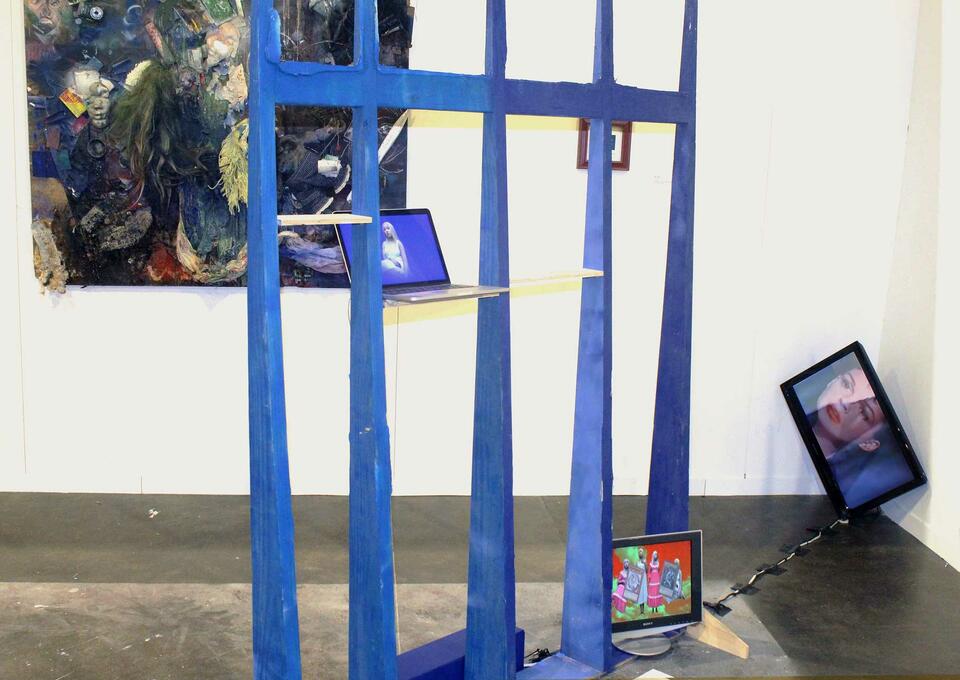Jack David Dumala
Better Together
Jack Dumala is a designer for the family. While his educational background is in design and child development, his origin of work resides in fine art. Most of Jack's works consist of design strategy, furniture fabrication, and experience design, but he also have a fascination for finding something new to learn about and invest time into the discovery. His current work "Better Together" focuses on how play can be used as a tool of communication within the family, and how play can be integrated into the home infrastructure for all ages.
There are natural themes to my work and there is a reason for that. I created a children’s story that correlates to the usage of this table. The relationships in the natural world can be a great motif of the family. By having the table mimic the shape and pattern of honeycomb, or having the coasters on the table have bees, bears, and flowers, I can bring a language that is identifiable to a range of ages. I also can represent other power dynamics that are at play in nature that are similar to parent child power differentials. For example, the relationship of bears and bees with honey, or the table being designed to dismantle hierarchy, creating equal sides of accessibility to the center compared to the traditional rectangular table.
Image
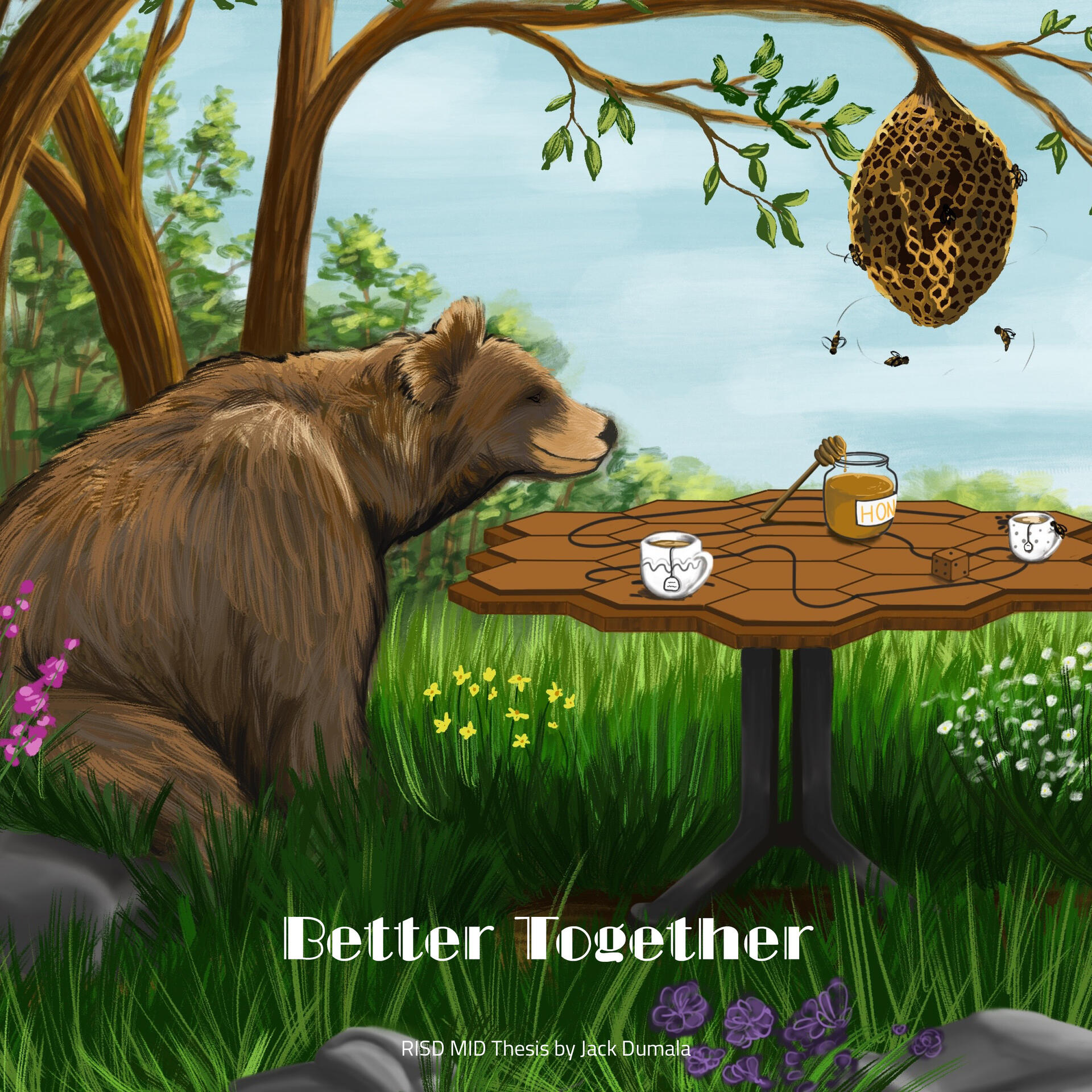
Better Together Thesis Book Cover
8.5" x 8.5"
Digital Illustration
A game table that helps facilitate togetherness through an experience of communication between parents and their children. Whether that is sharing memories, or beliefs on particular topics, this is the place to share them, through games
Image

Honeycomb Game Table in Use
41" x 44" x 29"
CNC'd Sapele Table Top with imbedded magnets, Magnetic Cork Game Tiles, Ceramic Mug Pawns, Playing Cards, Cork Gaming Die
The focus of my research is parent-teenager relationships and how to facilitate togetherness between the two, but this is also a table for any relationship: friends, neighbors, extended family, and romantic partners. The table includes 22 tiles, 19 of which to be arranged on its top to create a path from start to home. By using household objects as pawns, you move them by rolling the dice. This game can be competitive, sending your opponents back to start, switching with them, or moving them back spaces. There are opportunities for discussion and proclamation in this game. Under each tile a card is placed for a player to answer a question from an intended category decided at the beginning of the game. This table can be used for eating, gathering and gaming.
Image
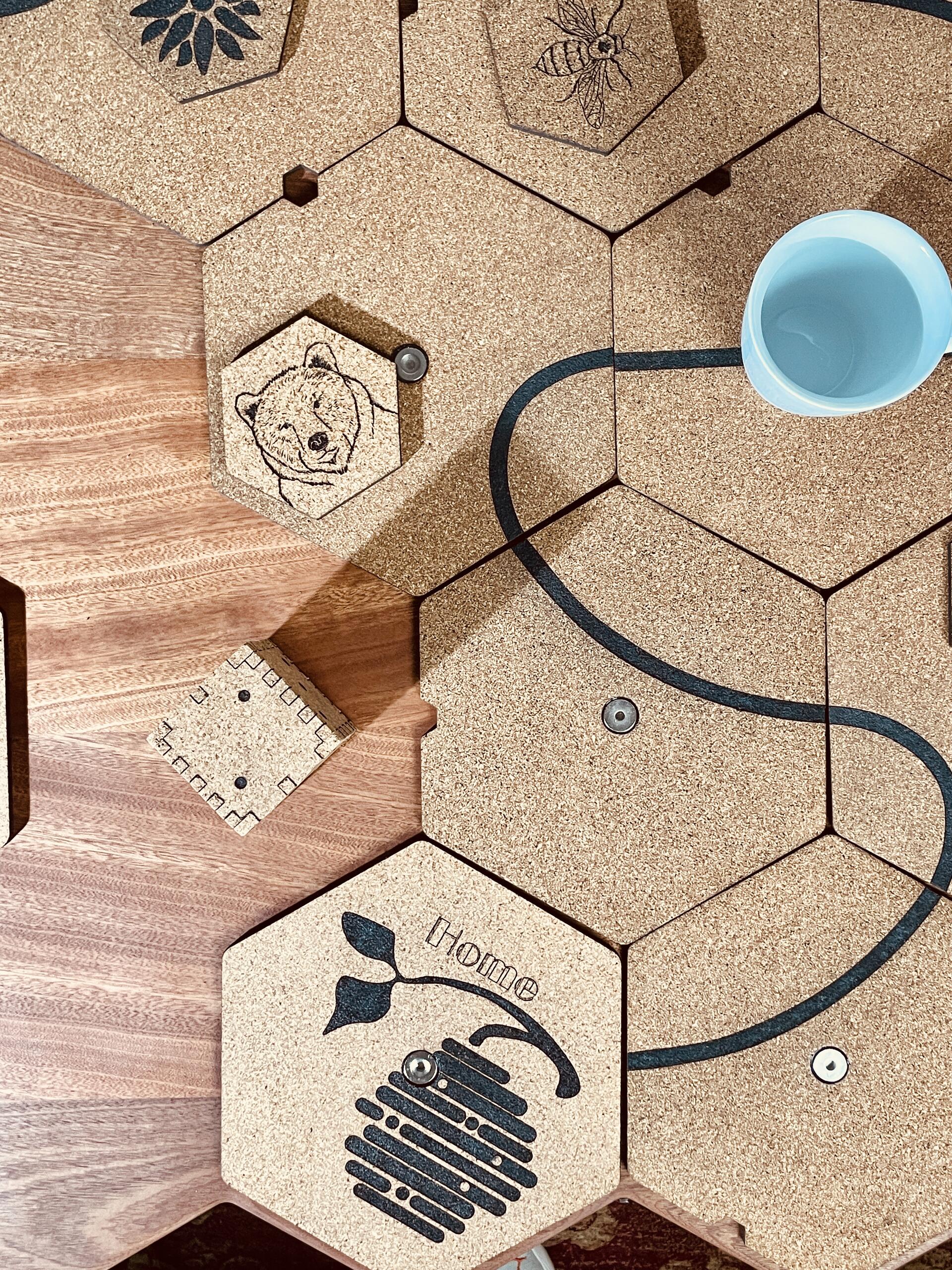
Honeycomb Game Table
This game has many components, all of which can be found on the understide of the table. Because the table it imbedded with magnets and the cork tiles are magnetic, you can store the tiles on the underside of the table. When the game is in play, the magnetic cork tiles register to the top of the table through magnetism as well. You will aslo find the game die and other gaming components in a bag that is magnetized to the bottom of the table
Image
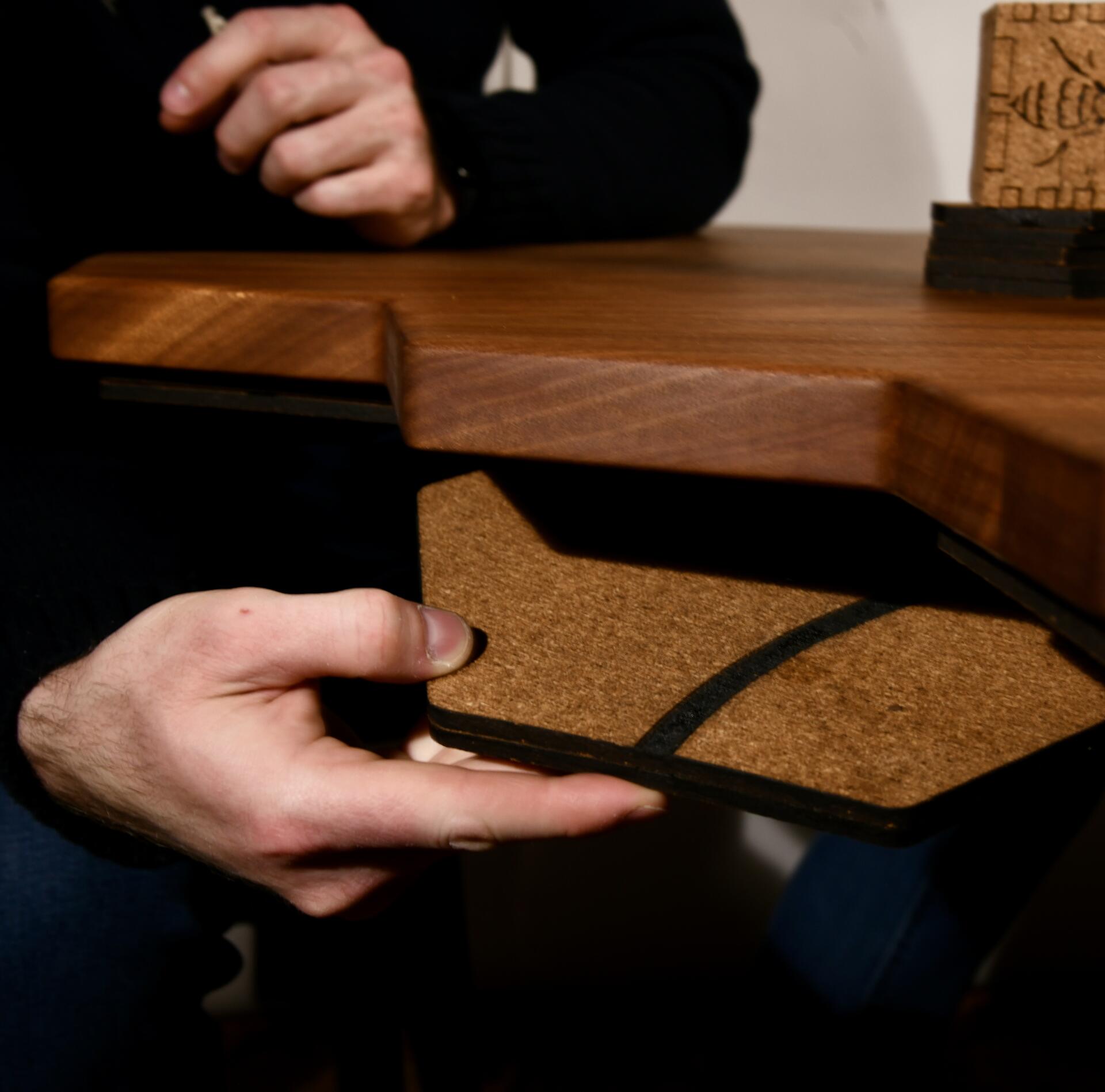
Honecomb Game Table
This is a still life of additional game like objects that have been integrated into household items. These are a set of three candle sticks that have an interesting internal play component.
Image
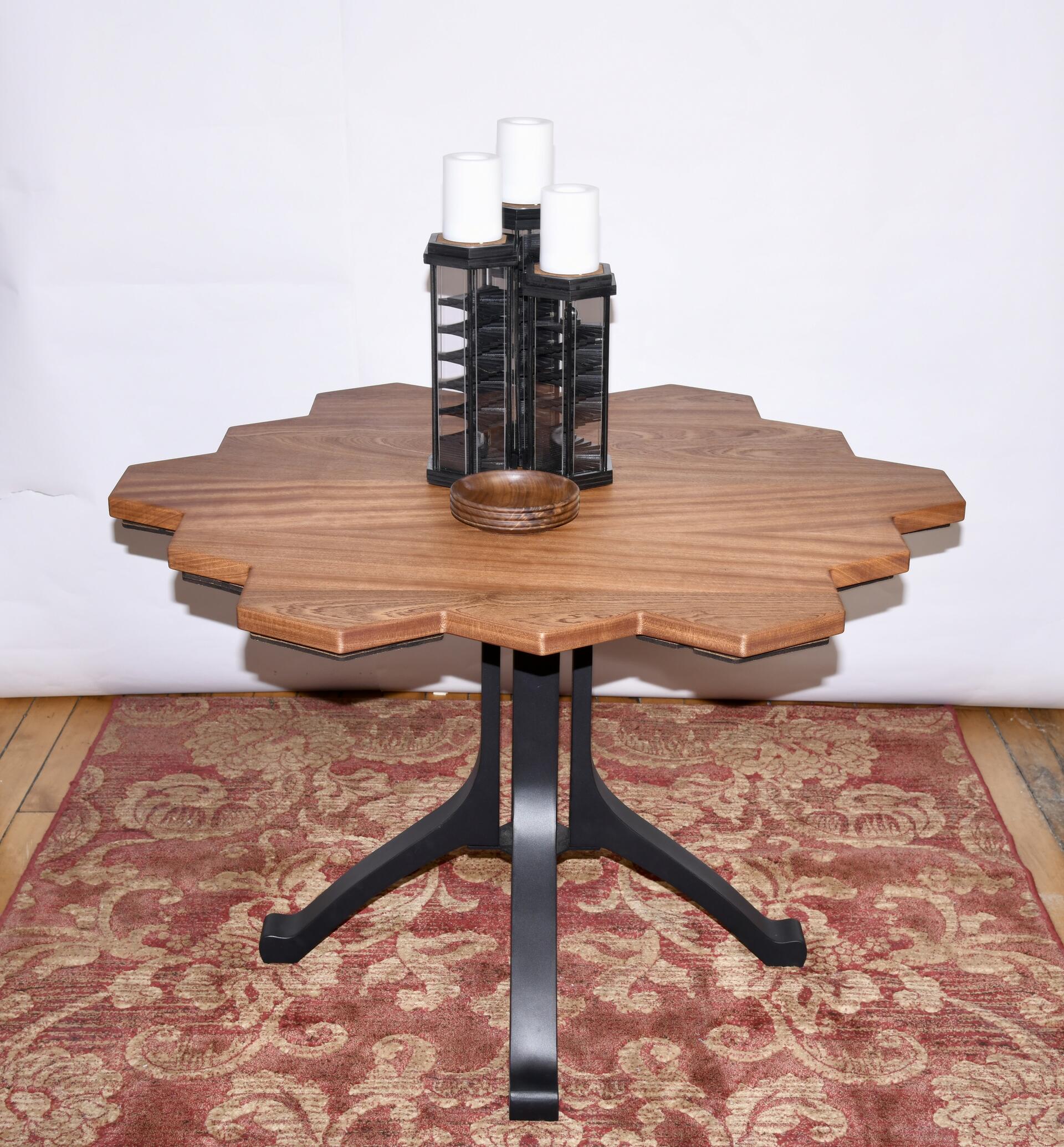
Marble Run Candle Stick Timers
Plywood, Plexiglass, and Metal Ball Bearing
Everyone loves a marble run and we just can’t understand why that is. It’s the simplest form of play - understanding gravity and directing a moving force.
The set of three candle holders has a spiral staircase for a marble to roll down.
This is a set, because the candle holders are stackable, allowing you to increase the time of your game play. This type of play enforces is a visual perception of time. Stakced together, the three candle sticks accumulate to 10 seconds of time.
Let us Play Charades
Image
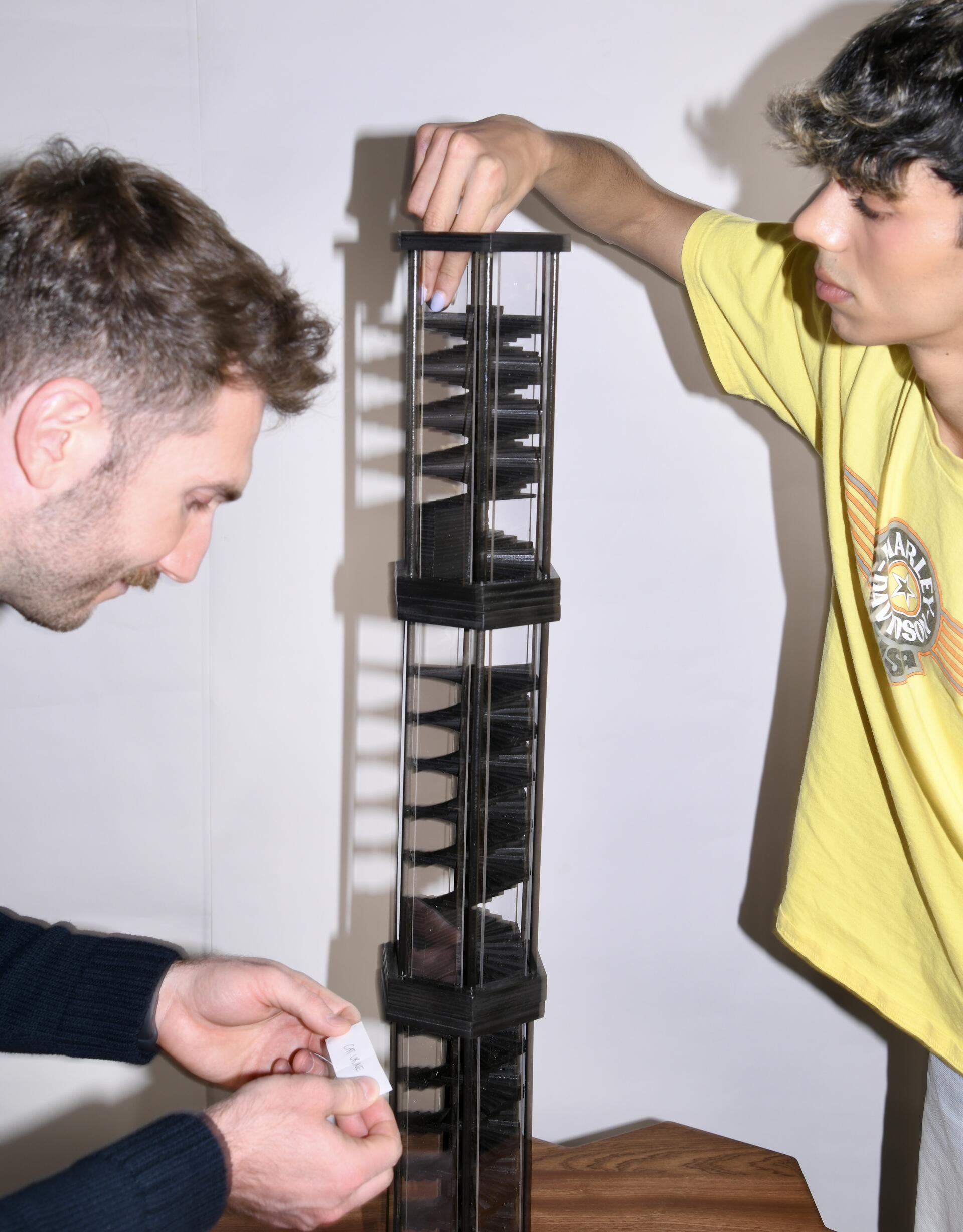
Marble Run Candle Stick Timers
Plywood, Plexiglass, and Metal Ball Bearing
Charades Game Rules:
1) Select five cards from the card deck. These will be your categories to answer.
2) Each player writes an answers on 5 individual pieces of paper.
3) Fold the pieces of paper and place into a central bowl.
4) Stack three marble ball candle stick timers on top of one another.
5) Split into two equal teams:
Team one releases the ball into the spiral two times to create an approximate 35 second timer.
Team two will select a player to pick a piece of paper from the bowl and describe to their team who/what is written without saying words on the paper.
6) Players will read aloud as many prompts as possible until time runs out.
7) Place the papers you have scored to the side. Tally the points.
8) Pass the bowl to the opposing team and continue until bowl is empty.
Image
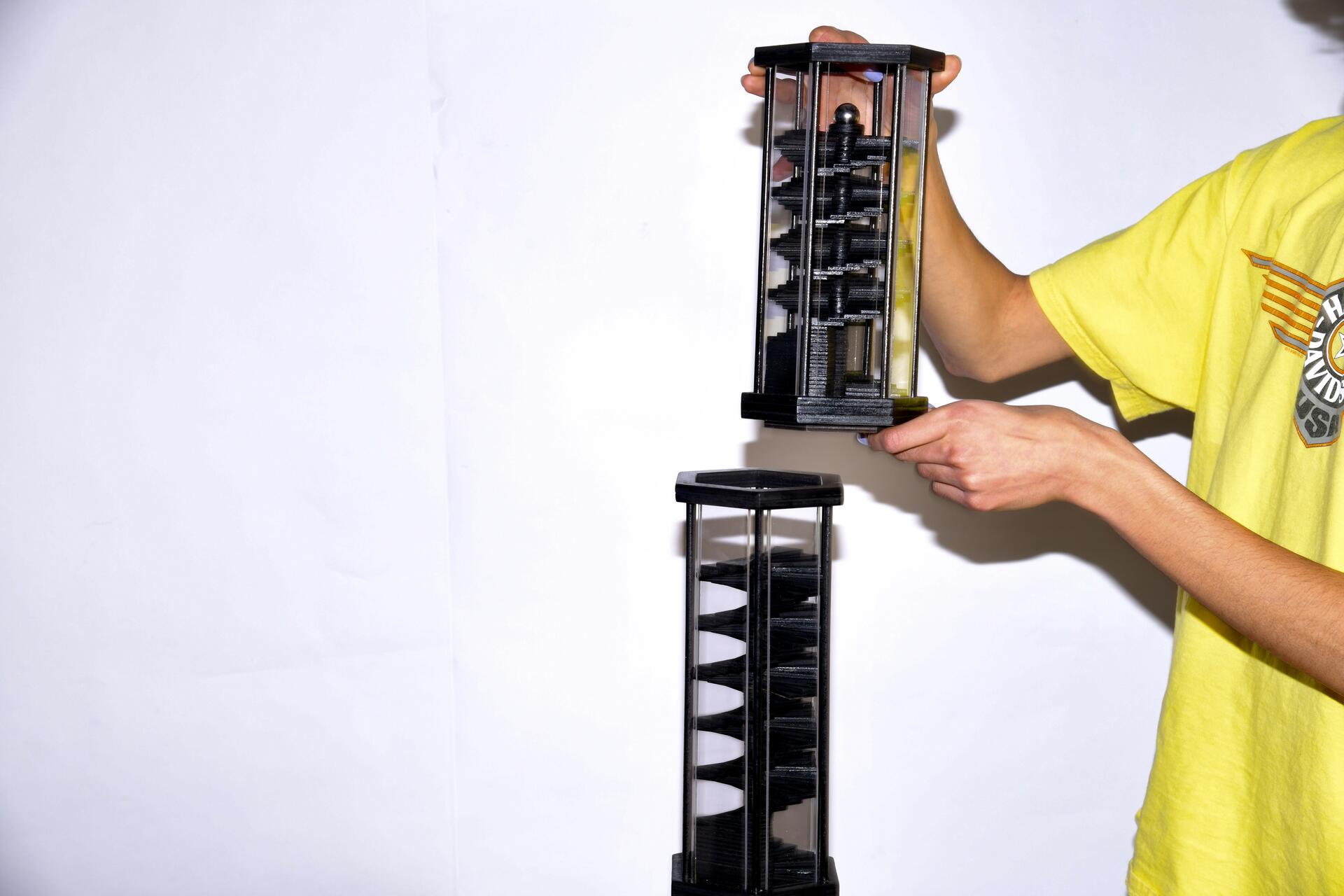
Marble Run Candle Stick Timers
Plywood, Plexiglass, and Metal Ball Bearing
EXHIBITION IMAGES
